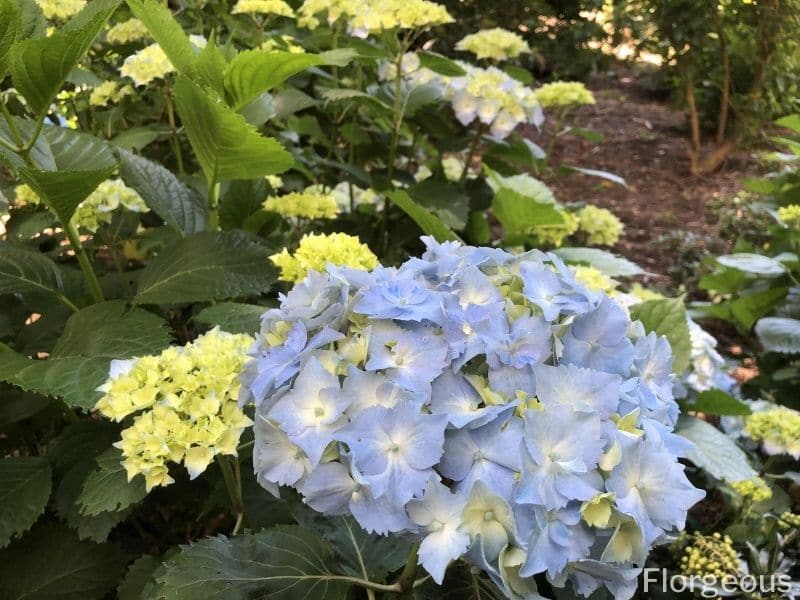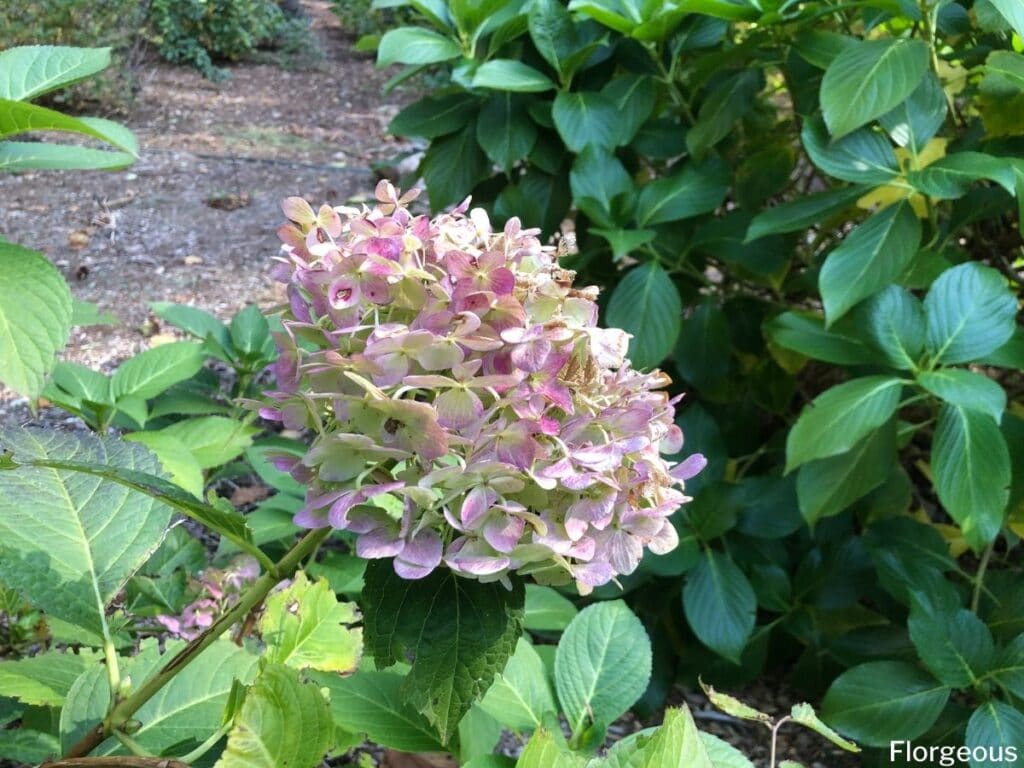If you’re wondering how to deadhead hydrangea bushes, you’re not alone. Many gardeners know that they’re supposed to deadhead their flowering shrubs, yet many forgo this step simply because they aren’t sure how, why, or when.
Here are some tips that will help you deadhead your hydrangea plants perfectly each time – so that you can enjoy more beautiful blooms as the season wears on.
Do You Cut Off Dead Hydrangea Blooms? Yes – Here’s Why!
Deadheading hydrangeas is important for a variety of reasons – but first, what exactly is “deadheading”?
This term simply refers to removing spent blooms from a plant once they have started to die back. When you deadhead (despite the macabre-sounding name), you aren’t harming the plant at all. Instead, you are triggering the flowering shrub to stop producing seeds and to put its energy toward the development of foliage and roots.
Unless you are purposely trying to collect hydrangea seeds, otherwise, deadheading is a healthy practice to follow.
By deadheading your flowers, you’ll not only be tidying up its overall appearance, but you’ll be doing it a serious favor, too. A deadheaded plant will grow better, be more attractive, and be healthier overall.
Deadheading is recommended throughout the growing season, but you can stop at the end of fall. Leaving flowers on your plant will provide winter interest and ensure the health of your plant.

How to Deadhead Hydrangeas
How you deadhead your hydrangeas will depend primarily on which varieties you are growing.
Panicle hydrangeas, or Hydrangea paniculata and Smooth Hydrangeas, should have their stems pruned back to a fat bud in the fall, spring, or late winter.
Bigleaf hydrangeas, or Hydrangea macrophylla; this plant begins forming buds in the late summer. Therefore, you will want to prune and deadhead sometime before August.
We’ll go more into more detail on the differences in deadheading and pruning these kinds of hydrangeas below.
Regardless of when you conduct a thorough pruning session, deadheading can be done (for the most part) at any time. If you’re strolling by your hydrangea and happen to notice any faded or dead blooms, simply clip them off.
You can also deadhead when you cut back blooms for flower arrangements. Cut all the way to the axle of the leaves for the best results.
If you’re deadheading after August, try to remove them with a short stem, leaving as much stem on the plant as possible. This will prevent you from disturbing any developing buds.
Before you deadhead, wipe down your pruner blades with a bit of alcohol. This will ensure that you don’t spread disease among your plants. Just remove each spent bloom, following down its stem to the next set of large leaves. That’s where you will make your cut.
When Should You Deadhead Hydrangeas?
How do you know the best time to deadhead? For starters, consider the type that you are growing. Some hydrangeas, including big leaf, lacecap, mophead, and oakleaf varieties, produce blooms on old wood. This means that the wood formed in the summer before the current growing season.
Other varieties flower on new wood, which was formed during the current season. More varieties produce on old wood than on new wood – the only ones that bloom on new wood are ‘Annabelle,’ ‘PeeGee’ types. ‘Endless Summer’ is a variety that produces both old and new wood and will grow flowers all summer.
For plants that produce growth on new wood only, it’s important that you deadhead at the end of the fall, going into the winter. You can also conduct a more intensive pruning, cutting all the way to the ground, if desired. This practice ensures healthy growth and sets the stage for next year’s flowers, which will grace your garden in early spring.
If you’re pruning plants that bloom on old growth, don’t do so in the late summer or fall. This will reduce the number of blooms you have the following year.
However, you can deadhead at any time, for the most part. You can deadhead your hydrangeas whenever the blooms have faded but you should stop all deadheading (for any type of plant) in the late fall. Leaving spent blooms in place provides winter interest, adding texture and a touch of color to your winter garden.
Do You Deadhead Hydrangeas in Summer?
In most cases, you can deadhead hydrangeas in the summer, but it’s important to pay attention to the specific type and cultivar you are growing to be sure.
Some varieties, like ‘Endless Summer’ should be deadheaded even earlier than summer (generally in the late spring). Others benefit from deadheading long into the fall.
Where Do You Cut Brown Hydrangea Blooms?
Knowing exactly where to cut your hydrangeas is vital. Cut just above the first set of leaves beneath the flower.
That way, you’ll be getting rid of the dried flowers so that you can showcase a better-looking set of healthy leaves. Avoid removing large portions of stems on bigleaf types of hydrangeas, instead just taking small cuttings here and there.
FAQs
What happens if you forget to deadhead hydrangeas?
If you forget to deadhead hydrangeas, the faded flowers will remain on the plant, and the plant may put energy into producing seeds rather than new growth or additional blooms. However, removing spent flowers on the plant won’t harm it significantly, and the flowers will eventually dry out and fall off on their own.
When should you remove dead flowers from hydrangeas?
Deadheading hydrangeas is typically done in late summer or early fall, once the flowers have faded and dried out. You can simply snip off the dead flowers with pruners or scissors, cutting just below the faded bloom. Removing dead flowers encourages the plant to put its energy into producing new growth and blooms rather than seed production.
As you can see, deadheading hydrangeas is a simple, straightforward process that will allow you to enjoy continuous blooms for weeks on end! Follow these tips for success each and every time.







